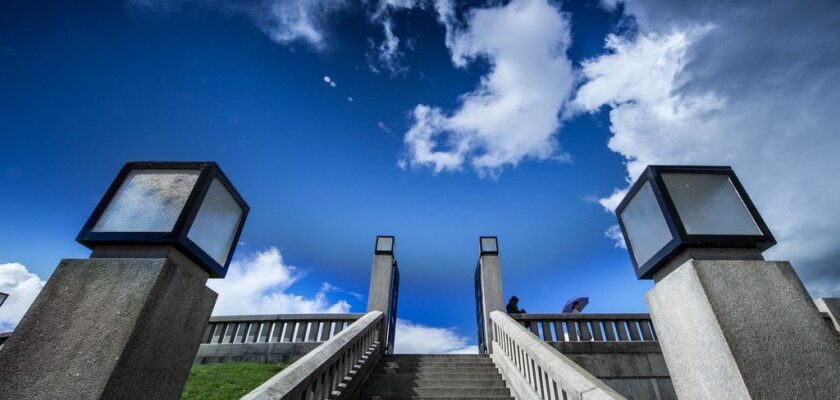Vigeland Sculpture Park (Frogner Park)
Vigeland Sculpture Park is one of the marvelous places located in the west of the city of Oslo, in the Frogner neighborhood. Vigeland Park itself is a component part of the huge Frogner Park. It was created by the great sculptor Gustav Vigeland between 1907 and 1942. It covers an area of 30 hectares, containing some 277 sculptural groups depicting the whole gamut of human relationships.
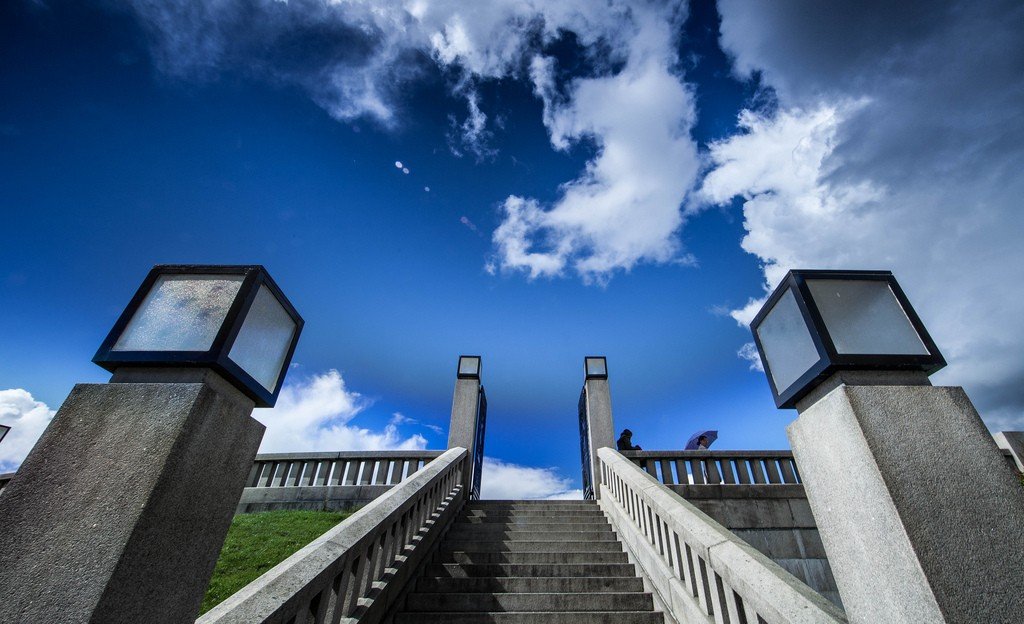
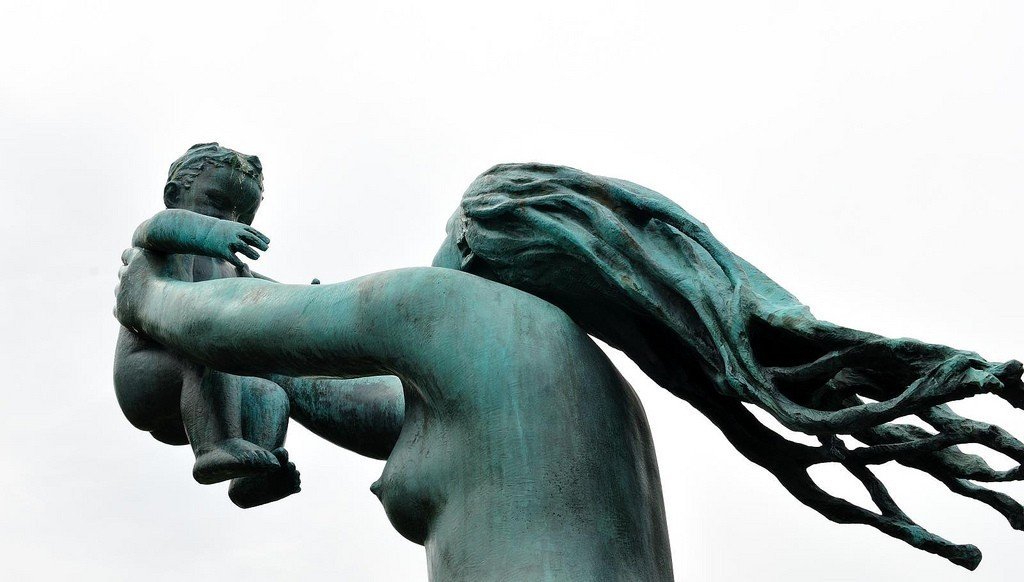
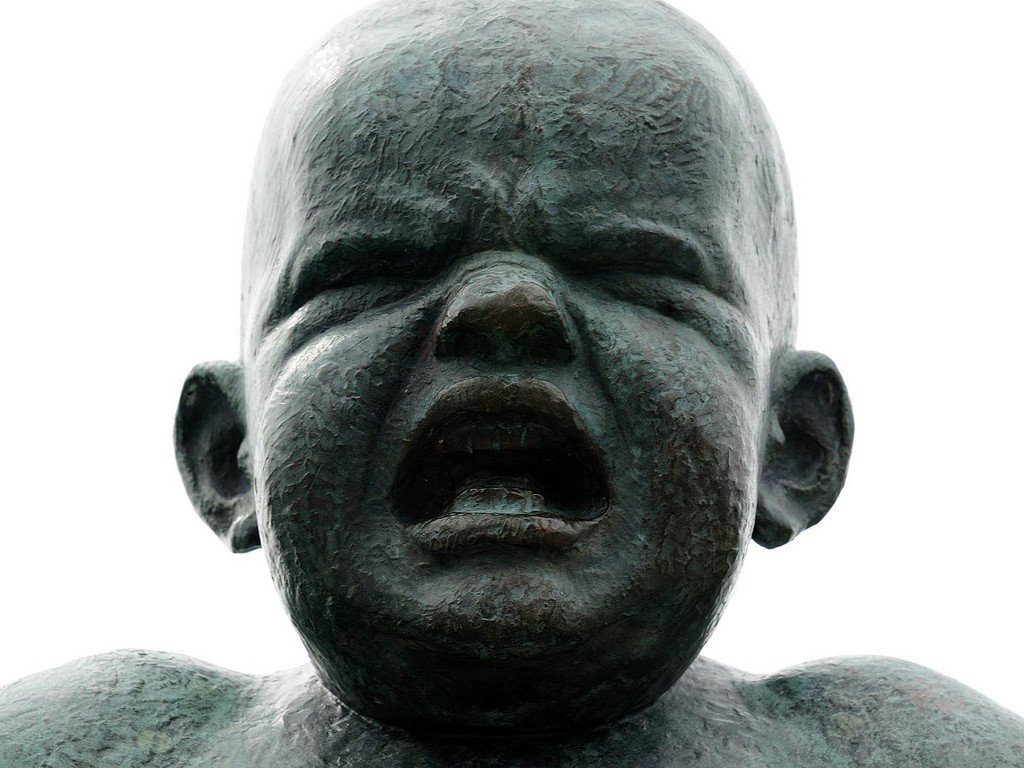
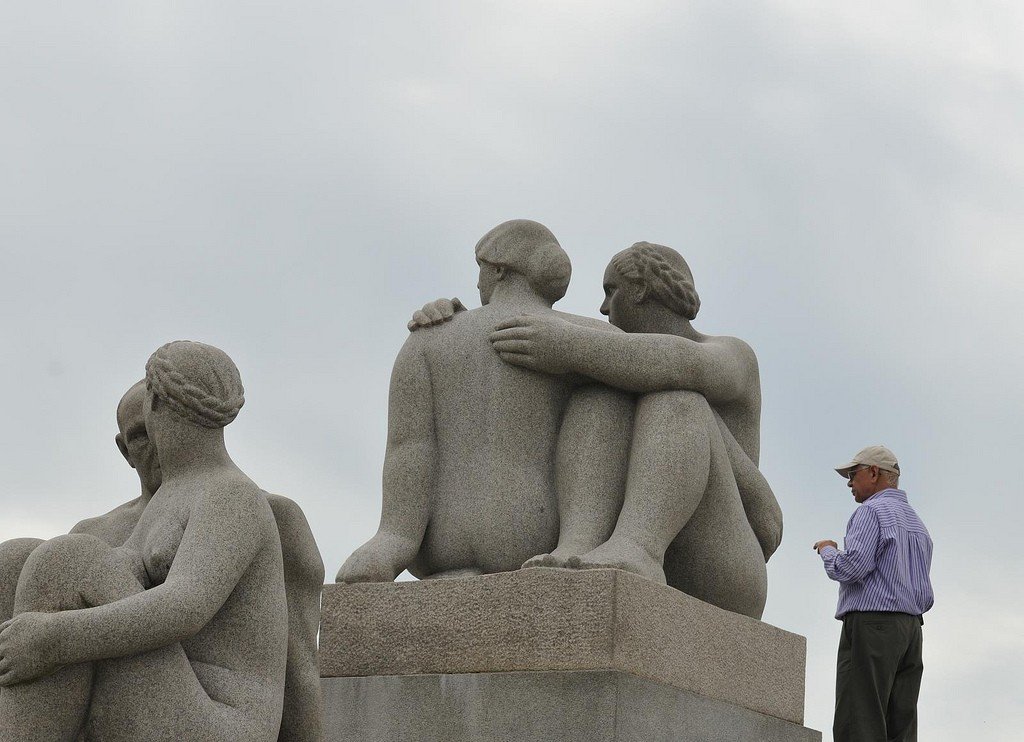
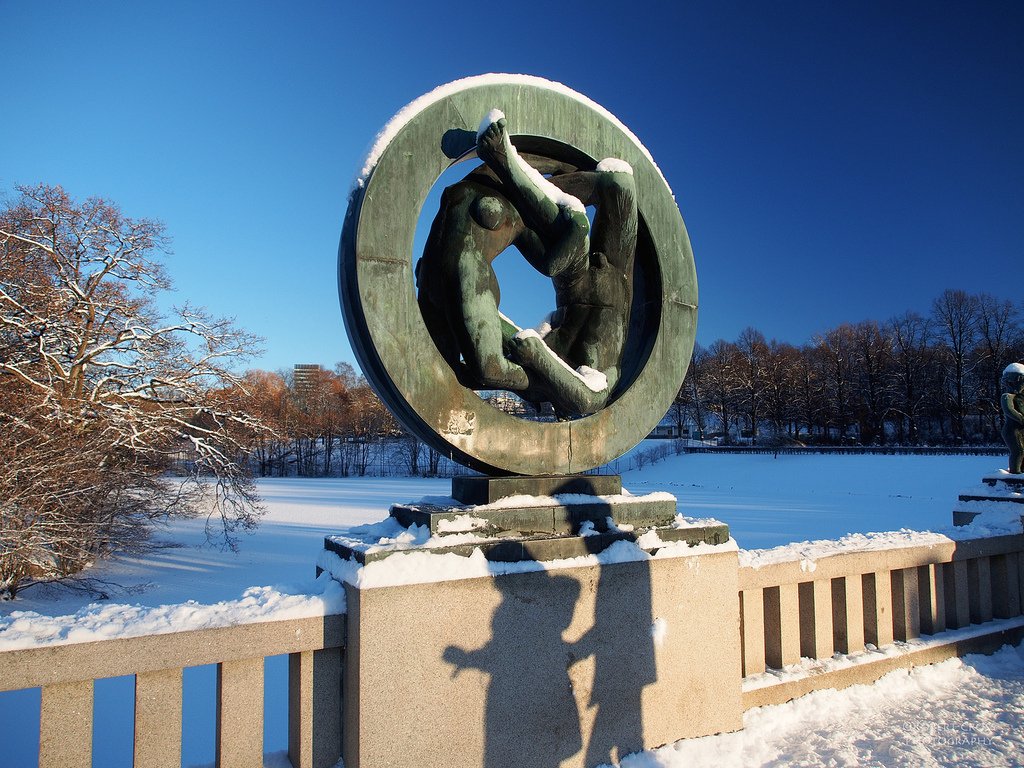
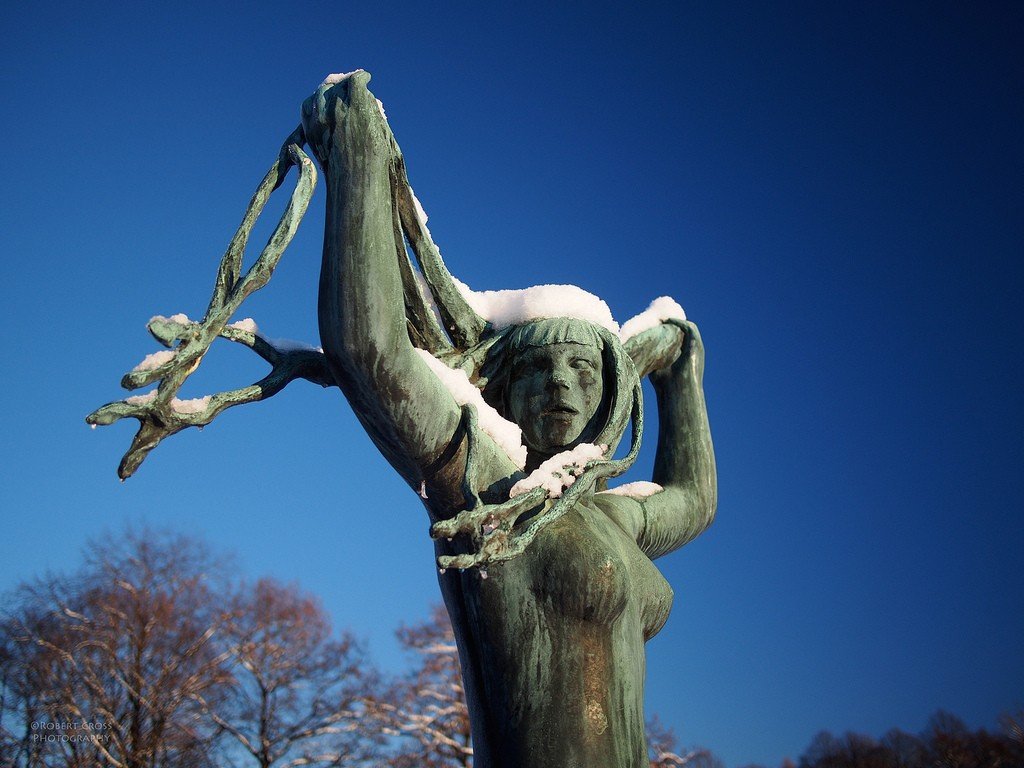
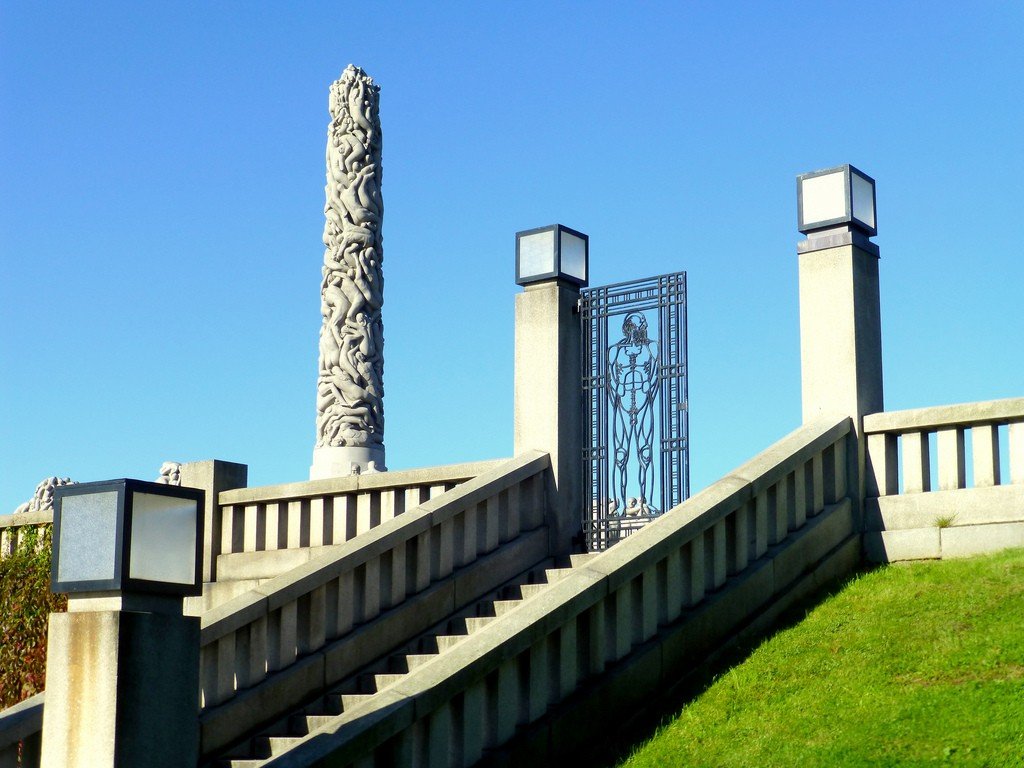
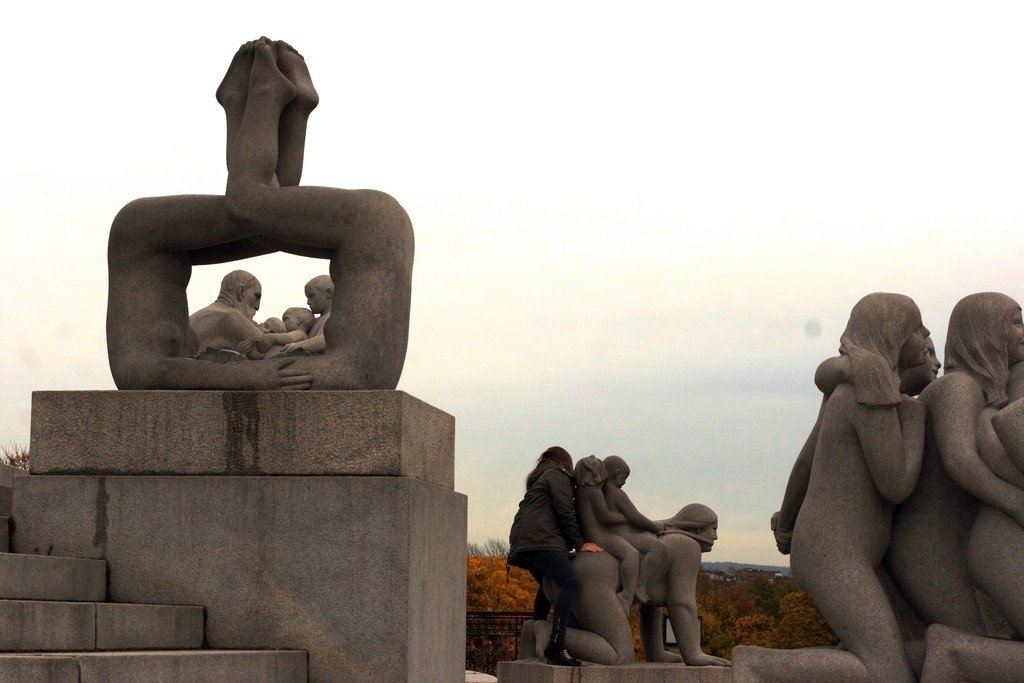
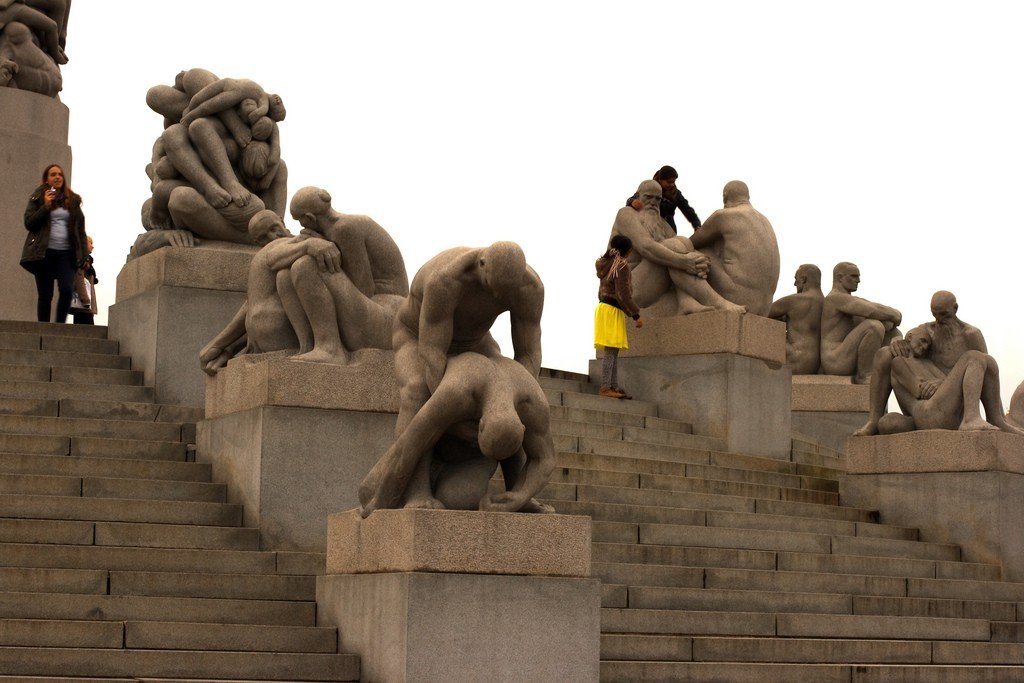
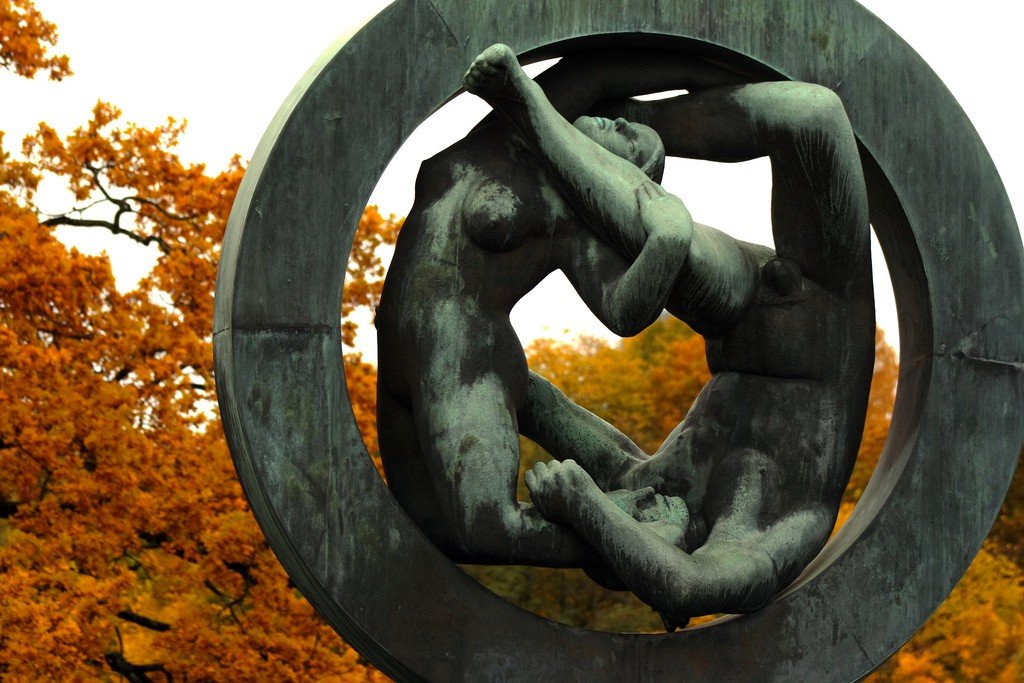
General Information
The theme of the park is the “human condition”. Most of the statues depict people who are depicted during various activities such as running, wrestling, dancing, hugging, etc. Each statue conveys a particular set of emotions, human relationships, often with deep philosophical overtones, making many of the compositions quite difficult to perceive, such as the sculpture of a grown man fighting off a horde of infants.
.Local residents actively use the park for play, outdoor recreation, and picnics. In March 2007, the park was vandalized – an unknown person or group of persons pasted black paper scraps on the nipples, crotches, and buttocks of all the park sculptures.
Park Attractions
Main Gate
The main gates (wrought iron and granite) serve as the direct entrance to the park. They consist of five large gates, two smaller ones for pedestrians, and two copper-covered checkpoints decorated with weathervanes. The main gate was installed in 1942 at the expense of the Norwegian Bank.
.Bridge
Fifty-eight sculptures are placed along the one hundred meter wide, 15 m long bridge from the Main Gate to the Fountain. All these bronze sculptures correspond to the main idea of the park – “Human Temperament”. Here visitors can see one of the most popular statues of the park – “Angry Little Boy”. In 1940, the Bridge became the first part of the park open to the public. Visitors were able to enjoy the sculptures while much of the park was still under renovation.
.Playground
At the end of the bridge is the Playground, a group of eight bronze statues depicting children at play. In the center, on a granite column, a fetus is depicted. In addition, there is a pond where ducks and geese swim.
.Fountain
According to the original design, the fountain, made of bronze and decorated with 60 individual bronze sculptures, was to stand in front of the Parliament building. The fountain, depicting children and skeletons on the branches of giant trees, symbolizes that death is followed by new life. Around the fountain lies an 1800 square meter mosaic of white and black granite. Vigeland worked on this monument from 1906 to 1943.
.Monolith Plateau
The Monolith Plateau is a stone platform surrounded by steps that serves as the base for the central figure of Monolith Park. 36 groups of people are placed on the elevation and symbolize the “circle of life”. Access to the plateau is through 8 figurative gates made of wrought iron. The gate was designed between 1933 and 1937. and installed shortly after Vigeland’s death in 1943
.Monolith
.At the highest point of the park, on the plateau sits the central figure, the Monolith. Erection of the massive monument began in 1924, when Gustav Vigeland modeled it in clay in his studio in Frogner. The design process took him 10 months and presumably Vigeland used several sketches designed as early as 1919. The model was subsequently “frozen” as a plaster model. In the fall of 1927, a block of granite weighing several hundred tons was delivered to the park from a stone quarry in Halden and it was not installed until a year later. A wooden canopy was built around it to protect the component parts. A plaster model of Vigeland was placed at the side as a reference to the sculptors of the project. The translation of the figures from the maquette began in 1929 and took three stone carvers some 14 years to final completion. On Christmas Day 1944, the public was allowed to view the Monolith and a crowd of 180,000 people overflowed the wooden canopy to get a closer look at the creation. The canopy was destroyed shortly afterward. The Monolith’s 14.12 meters (46.32 feet) tall tower structure consists of 121 sculptures rising to the heavens. The idea was implied as a human desire to become closer to something spiritual and divine. The ensemble depicts a sense of intimacy as the human figures embrace each other, they are being led towards salvation.
.Wheel of Life
At the end of the park’s 850 meters of longitudinal coordinates is the erection of a sundial forged in 1930, and finally the Wheel of Life, handmade from 1933-34. The wheel resembles in one way or another a wreath depicting four people and a child, infinitely happy in their harmony. This symbol of eternity encapsulates the main idea of the park: the journey of man from cradle to burial.
.Museums
There are two museums in the southern part of the park, the Vigeland Museum, where other sculptures as well as drawings by the master can be viewed, and the Oslo City History Museum.
Opening hours
From September 1 to May 31 from Tuesday to Sunday 12.00-16.00. Monday is a day off. June 1 through August 31 from Tuesday through Sunday 10 a.m.-5 p.m. Mondays are off.
.Entrance
There is a fee to enter the park. General ticket 50 kroner, concession and children’s ticket (from 7 years old) 25 kroner, children under 7 years old are free.
.How to get there
Vigeland Sculpture Park is located at Nobels gate 32. The nearest metro station to the park is Majorstuen. You can also get there by buses 20, 112 or streetcar 12, the right stop is Vigelandsparken.
>